Buddy Holly & Roy Orbison Sort of Live in Des Plaines
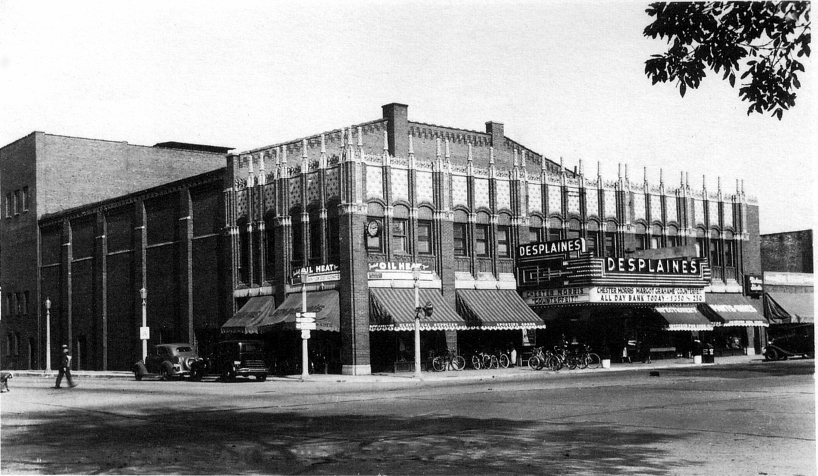
The Des Plaines Theatre, circa 1936. Postcard image via Revitalized Des Plaines.
The newly remodeled Des Plaines Theatre is a heavenly addition to the Chicago area’s entertainment landscape. The theater opened in August 1925 as a vaudeville and movie house. The Des Plaines reopened late last year after an ambitious restoration that rolled through the pandemic. The historic theater had been empty since 2014.
The city of Des Plaines purchased the art deco theater for $1.3 million in May 2018. The city partnered with nearby Rivers Casino, which chipped in up to $ 2 million for renovations. The city allocated funds from its budget for the $6.7 million makeover. It did not bond for the improvements.
The theater features a spacious Spanish Renaissance-style auditorium. A new, modern marquee is a replica of the 1935 art deco marquee. The city is leasing the theater to Onesti Entertainment Corporation, which has been booking shows at the 958-seat theater.
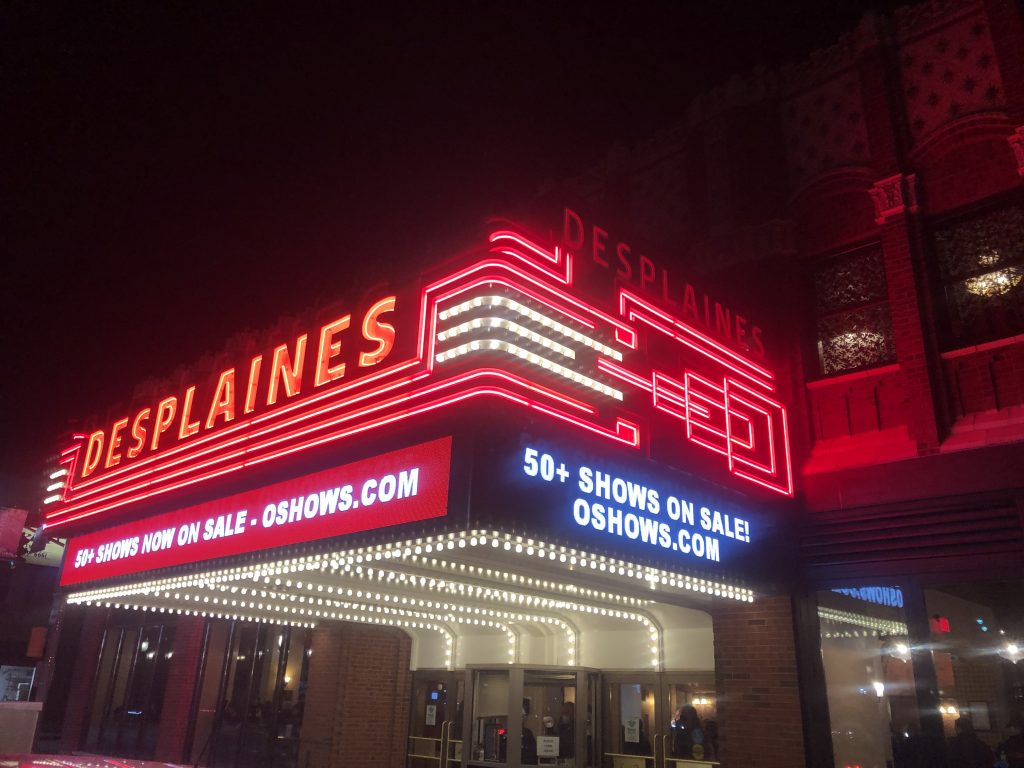
Bright lights, big city. (D. Hoekstra photo)
I love old movie theaters. They are places where ghosts dance and sing.
Chicago entrepreneur Ron Onesti has done a faithful job keeping the Arcada Theater alive in St. Charles, especially during a pandemic.
Over the years I’ve seen some excellent shows at the Arcada, including Ronnie Spector, Johnny Rivers, Burton Cummings, Southside Johnny & the Asbury Jukes and the final appearance of Canned Heat before original bass guitarist Larry “The Mole” Taylor died after a battle with cancer. While sitting in these old theaters I often wonder about all the artists who came before.
George Burns and Gracie Allen played the Arcada (opened 1926). The Des Plaines was a favorite stop for country-western singer Gene Autry, especially during the early 1930s when he was appearing on the WLS National Barn Dance radio program down the road in Chicago. One of the singing cowboy’s best-known hits is “Back in the Saddle Again” and that was the theme on Saturday night when Buddy Holly and Roy Orbison returned with a live band to headline the Des Plaines.
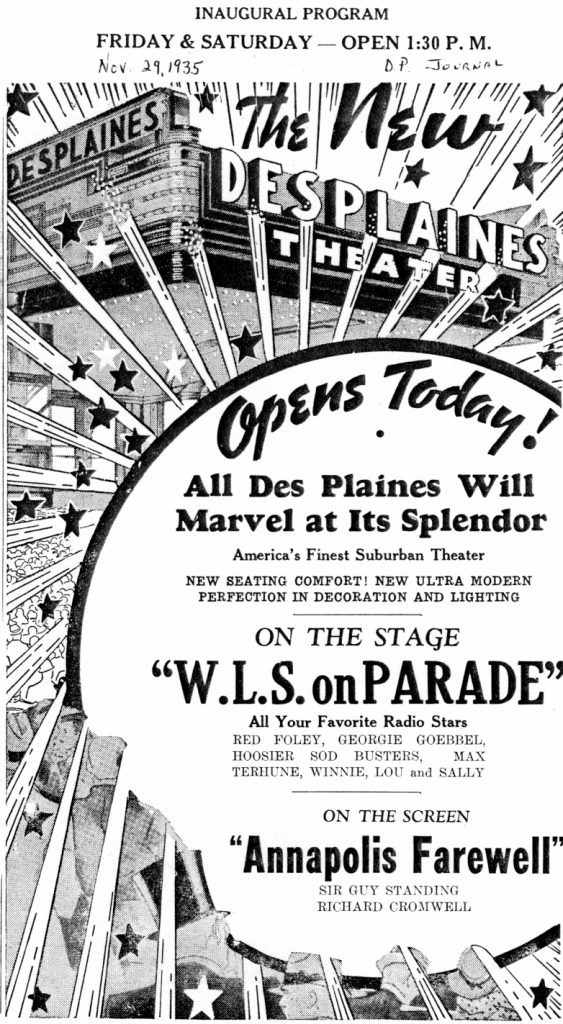
The Des Plaines held a grand re-opening with Red Foley and these country stars after a mysterious 1932 bombing.
I’ve been curious about the hologram deal going back to the summer of 2018 when Roy Orbison, Jr. talked about his father’s hologram tour on my dearly departed WGN-AM show. I’ve been to thousands of shows in my lifetime and I’ve never seen anything as strange as Saturday’s Holly-Orbison show.
First off, the dead singers were accompanied by a live band, consisting of drums, bass, guitar, and a female backing vocalist. The images of Holly and Orbison are portrayed by stand-in artists. Original footage is not used.
The only factor that makes this experience different than seeing an impersonator is the fact that original vocals have been digitally remastered.
Orbison and Holly traded sets. They had no photo restrictions. They did not say, “It’s great to be in Des Plaines!”
The holograms slowly appeared from the base of the stage to join the band. After a few songs, they departed in a gentle puff of smoke. The audience found delight in this weird transition. Each hologram did have a specter-like look. You could see the brick wall behind the stage through Holly’s hologram.
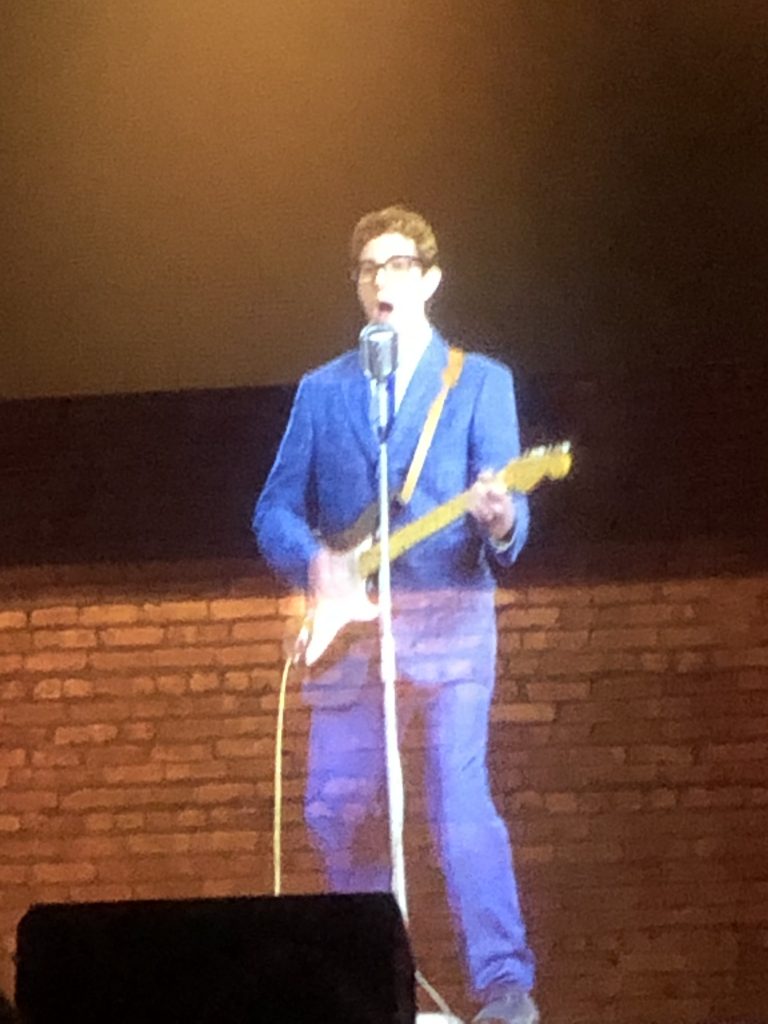
My first Buddy Holly concert.
Dead Buddy was more outgoing than Dead Roy. The Holly hologram acknowledged the band–especially the cute background singer–and he waved to the audience which was sort of creepy. The Orbison hologram wore shades, a gray suit, and played his vintage red Gibson guitar that was unplugged.
Of course, the holograms and their band performed all their hits. When Orbison sang his dramatic 1964 ballad “It’s Over,” I learned that it’s never really over. Orbison even revisited his final days on earth, covering the hit “You Got It” that he wrote with Jeff Lynne and Tom Petty. The pop anthem was released in January 1989 after Orbison’s fatal Dec. 6, 1988 heart attack. He was only 52.
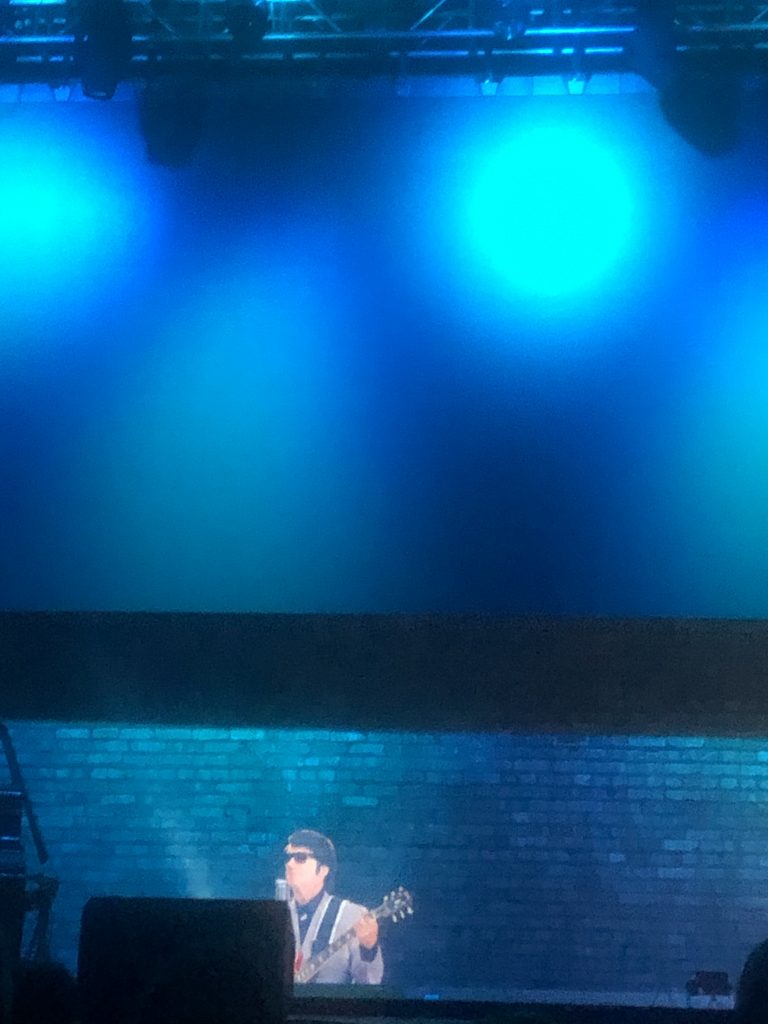
Roy enters from the bottom of the stage.
I kept shouting “Learning the Game” for Holly but that fell on deaf ears. After Orbison left in a puff of smoke, Holly emerged with “Not Fade Away” (cute call) followed by “Everyday,” “Crying, Waiting, Hoping,” “Peggy Sue” and more. Just like life, Holly’s songs are short and meant to be enjoyed in totality.
The theater was about a third full for the hologram event. Tickets were $19 each. The show ran about two hours with a 15-minute intermission. The audience was older. Much older. And people gently sang along to a couple of songs from when they were young.
As most of the audience harmonized on Holly’s “True Love Ways” an older gray-haired gentleman in front of me placed his arm around an older gray-haired woman who was presumably his wife. Maybe belief was suspended for a moment. Or perhaps they realized that all of show business is an illusion. We are in a world framed by a pandemic, European conflict, global warming, and a major league baseball lockout. Everything is “Maybe Baby.” You find fun where you can.
The holograms aren’t technically holograms. According to an interesting March 12, 2020 article in “Interesting Engineering” the definition of a hologram is a three-dimensional projection of diffracted light that retains the depth of the source it is displaying. The Orbison and Holly “holograms” have their roots in a 200-year-old parlor trick called Pepper’s Ghost. This gimmick takes the Des Plaines back to its vaudeville roots when the theater hosted animal circuses and magic acts.
According to Interesting Engineering, the Pepper’s Ghost” technique uses a reflective pane of glass that is angled toward a booth underneath the stage. Because of the glass, the image of the actors in the booth are projected on stage, creating the ghost-like quality that dazzled Saturday’s audience. It really is a 2-D projection that gives the audience an illusion of a 3-D projection.
Several hologram artists are floating around besides Orbison and Holly, both created by BASE Hologram. The late artists Tupac Shakur (he popped up at Coachella in 2012), Michael Jackson, Elvis Presley (in 2017 he sat in with Celene Dion to sing “If I Can Dream” on American Idol) and metal god Ronnie James Dio have been hologrammed. I think Keith Richards is already a hologram. Now that Holly and Orbison are off my bucket list, there’s only one hologram artist I would want to see:
Merle Haggard.
But I will return to the Des Plaines Theatre for the full live music experience. The theater’s opera boxes were partitioned off and what looks to be a 1950s era pizza parlor is still in development near the main entrance. In the next few weeks, Onesti plans to open a second-level speakeasy, just as he has at the Arcada.
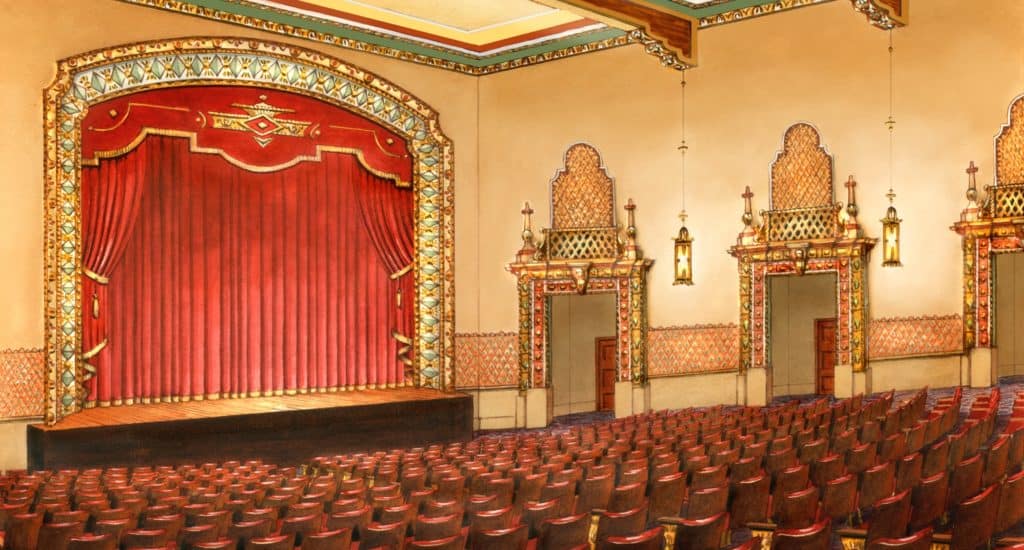
Vintage shot of the Des Plaines Theatre.
On a Saturday night, downtown parking was free around the theater. The theater is across the street from the Metra train station. There’s a place called the Illusion Cafe, 659 N. Wolf Rd. in Des Plaines, and my friend Mark and I adjourned to the cozy Miner Street Tavern, 1494 Miner St. next to the theater to suss out the entire hologram experience. I’ve met lots of holograms in bars.
Upcoming shows at the Des Plaines are former Strawbs-Yes keyboardist Rick Wakeman in what is billed as “The Even Grumpier Old Rock Star Tour” (memo to Rick: you could be a hologram.) on March 5; the rhythm and blues horn band Tower of Power on March 20 and the English Beat playing ska hits like “Mirror in the Bathroom” on April 7.
Rebirth is in the air in this gritty suburb 20 miles northwest of Chicago. After a suspicious 1932 bombing, a 1982 basement fire, and its last early 2000s incarnation as a Bollywood-type movie theater, the Des Plaines Theatre is alive again.



Leave a Response